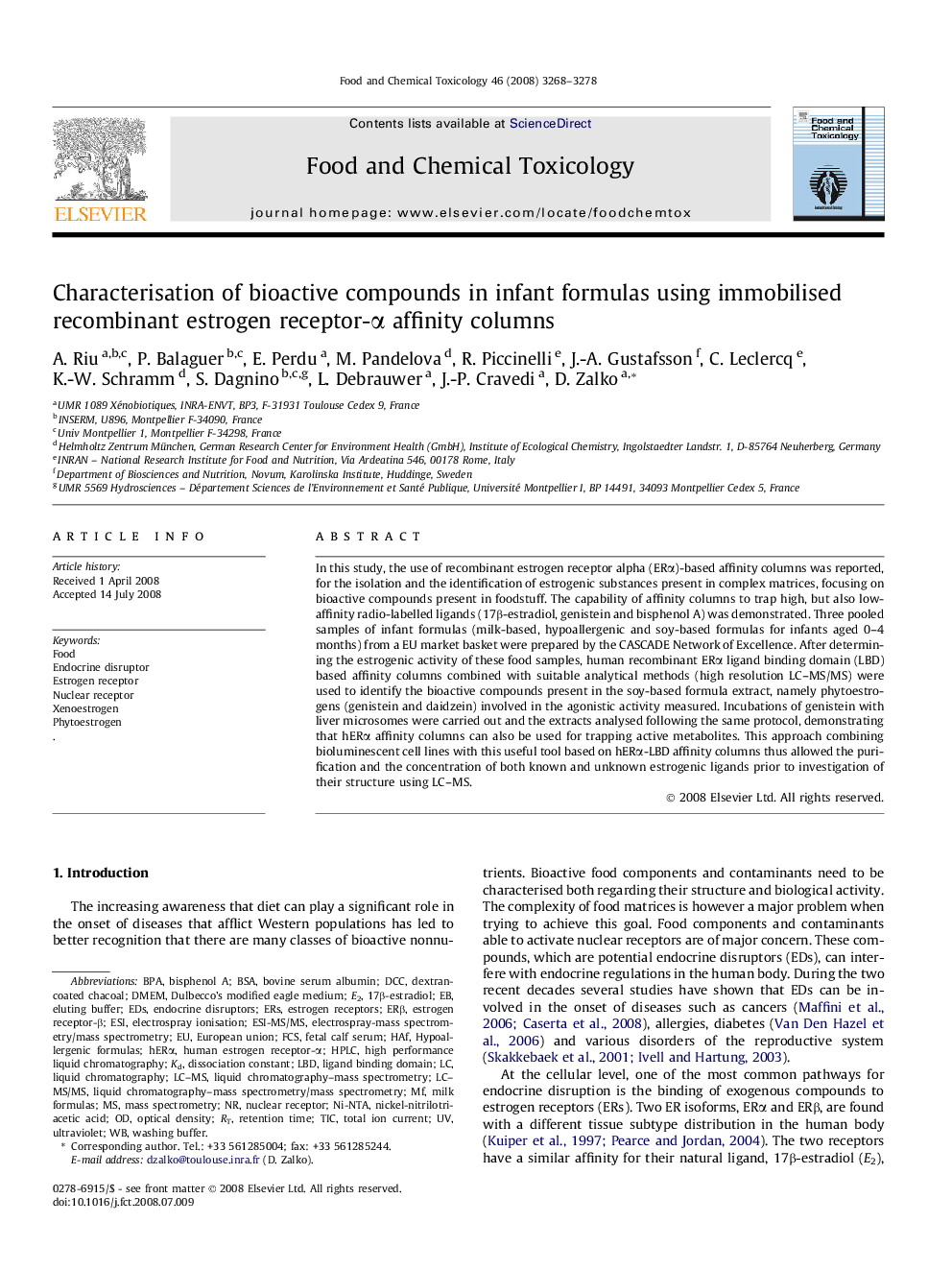| Article ID | Journal | Published Year | Pages | File Type |
|---|---|---|---|---|
| 2587240 | Food and Chemical Toxicology | 2008 | 11 Pages |
In this study, the use of recombinant estrogen receptor alpha (ERα)-based affinity columns was reported, for the isolation and the identification of estrogenic substances present in complex matrices, focusing on bioactive compounds present in foodstuff. The capability of affinity columns to trap high, but also low-affinity radio-labelled ligands (17β-estradiol, genistein and bisphenol A) was demonstrated. Three pooled samples of infant formulas (milk-based, hypoallergenic and soy-based formulas for infants aged 0–4 months) from a EU market basket were prepared by the CASCADE Network of Excellence. After determining the estrogenic activity of these food samples, human recombinant ERα ligand binding domain (LBD) based affinity columns combined with suitable analytical methods (high resolution LC–MS/MS) were used to identify the bioactive compounds present in the soy-based formula extract, namely phytoestrogens (genistein and daidzein) involved in the agonistic activity measured. Incubations of genistein with liver microsomes were carried out and the extracts analysed following the same protocol, demonstrating that hERα affinity columns can also be used for trapping active metabolites. This approach combining bioluminescent cell lines with this useful tool based on hERα-LBD affinity columns thus allowed the purification and the concentration of both known and unknown estrogenic ligands prior to investigation of their structure using LC–MS.
